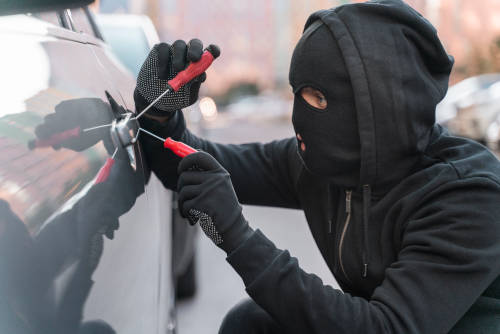VW POLO CANBUS
If you own a Volkswagen Polo, you more likely that not already know that a
Controller Area Network (CAN) bus is an
automotive wire network
loosely referred to as a bus. The word "bus" comes from the electrical
power distribution sector where bus-bars were considered a metalic strip made
of copper, brass or even aluminium that served as a source of electric power
to the load.
CAN BUS
However CAN Bus is more akin to Ethernet than a bus-bar. Ethernet is a
computer networking technology using Unshielded Twisted Pair cable (UTP)
either CAT5 or CAT6 which is now commonly used in local area networks capable
of sending
IPv4 / IPV6 packet
across its networks at speeds ranging from as slow as 10Mb/s to as fast as
1000 Gb/s, hardware dependent of course.
Twister pair electrical wires with various colour tracers.
Likewise CAN is a network technology commonly used in automotive networks
capable of sending CAN-frames across its network at various speeds, again
application dependent. It is essentially a very
reliable multi-master arbitration free serial bus, connecting numerous Electronic Control Units (ECUs) aka nodes together.
CAN BUS vs ETHERNET
The big difference between the two, is that Ethernet is an 8-wire bus
comprising of 4 unshielded twisted pairs of wire, each with a specific colour
coding, whereas CAN has only a single unshielded twisted pair of wires also
with a specific colour coding. The CAT5 protocol insists on
2 twists per centimeter
and CAT6 with more twists per centimeter whereas the CAN protocol insists on a
1 turn per centimeter. The lay of these wires are very specific and necessary
to reduce or cancel interfering signals picked up from the environment by
them, which is more commonly referred to as "crosstalk".
CAN BUS HIGH & LOW
Bearing in mind CAN comes in two varieties used for different functions, viz
CAN-High (CAN-H) and CAN-Low (CAN-L).
CAN-H is used for the Powertrain, the Convenience and Infotainment buses.
Whereas CAN-L is used for the rest of the bus wiring. Both CAN-High and
CAN-Low uses different colour wires for different makes of vehicle. For
example:-
Manufacturer CAN High CAN Low
Mercedes
Brown/red Brown
Volvo White Green
Vauxhall Green White
BMW 1 & 3 Green/orange
Green
BMW 5 & 6 Black Yellow
Porsche Yellow Black
The big difference between the three buses for VW,SEAT, Skoda and Audi is
that:-
1) The Powertrain bus wires interconnected to all the powertrain
modules / nodes are coded Orange & Black CAN-H
2) The Convenience bus wires interconnected to all the convenience
modules / nodes are coded Orange & Green CAN-H
3) The Infotainment bus wires interconnected to the
infotainment modules / nodes are coded
Orange & Violet /Purple CAN-H
4) CAN-L bus wires to all the interconnected convenience modules / nodes are
coded Orange & Brown. (Electronics colour code 31)
REPAIRING WIRES
CAN wires are typically multi-strand 0.35mm to 0.5mm square with
120 ohm termination impedance, capable of transmitting information using two complementary signals which
makes them even less prone to crosstalk. But thin wires are prone to break and
if and when they do, it is recommended that when repairing these CAN Bus
wires, that both wires must always remain the same length and of equal
thickness.
Implying CAN BUS is extremely unforgiving. So, when wire 1 of the pair is
broken, wire 2 should also be cut and the piece of wire added in-between must
be exactly the same length; and that the lay length of 1 turn per centimeter
must be observed.
ELECTRICAL INTERFERENCE
Failure to do so, may created a discrepancy in the wire length of the one wire
in the twisted pair as well as in their differential voltages, hence result in
network errors —
ground noise, electrical interference, hum, buzz, spark plug
spikes
— cannot and will not be appropriately cancelled.
Whenever repairs are made to any CAN Bus wiring, it is highly recommended that
all CAN Bus wire repairs are covered and
highlighted with yellow insulation tape
to signify to anyone doing successive work, that a previous repair was carried
out.





